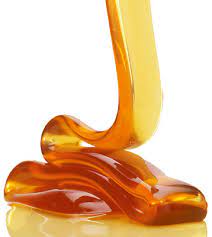


Question: what is the connection between these pictures?
Answer: the theory of optimal control.
Description
The birth of the optimal control theory dates back to the early 19th century, however its modern mathematical look started to be shaped around Word War II by the fundamental works of Isaacs, Bellman and others. We can say without exaggeration that the first groundbreaking applications of this theory were the successful space exploration projects in the 1960s. From the mathematical viewpoints, these problems have an intimate connection to the the theory of nonlinear partial differential equations, through the to so-called Hamilton-Jacobi-Bellman equations. This discovery had its first peak point in the 1980s by the works of Crandall, Lions and Evans. The revolutionary notion of viscosity solutions for such equations, introduced by these researchers, eventually granted the Fields Medal for Lions in 1994. It is needless to say that studying PDEs arising in "rocket launching problems" from the point of view of viscous materials was quite unexpected in the mathematical community.
Nowadays the optimal control theory represents a hot topic at the interface of pure and applied mathematics. This is mainly due to its great use in areas as machine learning (including applications for self driving cars, drones, etc.), game theory, finance, macroeconomics and even social sciences (studying the behavior of large populations for instance).
Roughly speaking, an optimal control problem consists in finding the cheapest possible way to drive a system from one state to the other, while one has access to the system only via some special objects, so-called controls. For instance, driving a car from a given point to another represents such a problem, where the meaning of the cheapest can stand for shortest time, shortest geographical path, cost of fuel, etc. while the controls are the break, steering wheel, etc.
Goals of the project
The main objective of the project is the mathematical analysis of the PDEs arising in deterministic control problems. To achieve this, we will first consider some of the main building blocks of the theory (including bang-bang controls; dynamic programming principle; Pontryagin maximum principle; etc.). We will also see the deep role of convexity in these considerations. As a next milestone, we will investigate the so-called regularisation effect of various kinds of noises added to the models. From the point of view of fluid mechanics, philosophically this corresponds to adding viscosity to the models.
A second important goal of the project is to study rich classes of optimal control problems arising in other fields. These will include differential games, mean field games, models arising in macroeconomics (such as income or wealth distribution dynamics in a society) or machine learning. There will be a liberty to choose subtopics from these applications, based on the individual interest of the participants.
Pre- and co-requisites
Basic theory of ODEs; a bit of optimization.
Analysis III or PDE III is essential. Functional Analysis and Applications IV might be taken simultaneously with the project.
Main text
+ L.C. Evans, An Introduction to Mathematical Optimal Control Theory, Lecture notes, UC Berkeley (online accessible on the author's webpage)
Some further reading
+ P. Cannarsa, C. Sinestrari, Semiconcave functions, Hamilton-Jacobi equations, and optimal control, Progress in Nonlinear Differential Equations and their Applications, 58. Birkhauser Boston, Inc., Boston, MA, 2004.
+ M. Bardi, I. Capuzzo-Dolcetta, Optimal control and viscosity solutions of Hamilton-Jacobi-Bellman equations. With appendices by Maurizio Falcone and Pierpaolo Soravia. Systems & Control: Foundations & Applications. Birkhäuser Boston, Inc., Boston, MA, 1997. xviii+570 pp.
+ M. Crandall, H. Ishii, P.-L. Lions, User's guide to viscosity solutions of second order partial differential equations. Bull. Amer. Math. Soc. (N.S.) 27 (1992), no. 1, 1-67.
+ Y.T. Chow, J. Darbon, S. Osher, W. Yin, Algorithm for Overcoming the Curse of Dimensionality for State-dependent Hamilton-Jacobi equations, Journal of Computational Physics 387, pp. 376-409, (2019).
+ P. Cardaliaguet, A. Porretta, An introduction to mean field game theory. Mean field games, 1-158, Lecture Notes in Math., 2281, Fond. CIME/CIME Found. Subser., Springer, Cham, (2020).